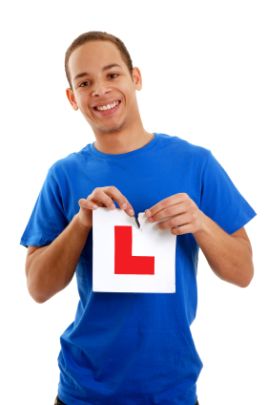The automatic transmission explained
Whilst the automatic transmission system is very clever, you still need to have some control over it, and this is where the selector lever comes into play, which is in the place that you would have the gear stick in a manual transmission car in most cases, although not always.
The most important ones are:
N: this stands for Neutral, and you start the car engine with the lever in this position.
P: this stands for park and it locks the transmission, clearly this should be used when the car is parked and the engine is off.
R: for reverse; as the name suggests this is for when you need to reverse the car
D: Drive, this is the position that you'll have the lever in the vast majority of the time because this is the position when you want the car to go forwards, which is the majority of the time; in ordinary road driving you will have the car in D and the automatic transmission will control the gears itself automatically
Individual gear numbers: some automatic transmissions will let you specifically select a gear, or limit the top gear: this is for conditions where the automatic transmission might select the wrong gear, for instance going up a steep hill or similar
Drive options: there can be other drive options available too, these would typically be numbered D1 and so on.
Related Articles...
Driving Theory Test
Until relatively recently in driving history, there was no theory test. From the time the first person passed a driving test in the UK in 1935 through to 1996, there was no separate theory test. ...
Types of brakes and braking system
The brakes on your car are one of the most important elements of the car, and when you learn the ABC of accelerator, brake and clutch you realise if you hadn't already how to standardly operate the...
Why new drivers are more likely to be involved in an accident
It is a well known statistic that new drivers are more likely to be involved in accidents, and indeed insurance companies definitely know this as you'll see by comparing premiums as a new driver...
Risk factors when driving: snow and ice
When the snow is falling, there is one big problem - it is hard to see far infront. So like fog, reduced visibility is the problem with snow. And when there is heavy snowfall it can be very hard...
Vehicles that cannot be used for a practical test
The vast majority of drivers will of course use the vehicle of their instructor or driving school when they take their practical test and so will not need to worry about the vehicle.
However...
Your legal obligations as a driver
There are some basics that everyone knows when it comes to being able to behind the wheel of a vehicle. These are of course meeting the legal eyesight requirements, being older than the minimum age...
Typical brake faults outlined
The brakes are a mechanical object and so it is possible that they will develop problems and not function the way that they should be. This is clearly very dangerous because brakes are one of the...
Being aware of potential hazards
Having the maximum time possible to react to hazards is important and can be the difference between an awkward situation or even an accident and continuing safe driving.
This requires you not...
Watching others whilst on the road
You can't rely on other road users not to do something wrong. Whilst most articles on this site tend to focus on cars, there are other and particularly vulnerable road uesrs out there.
These...
DSA Driving Theory Test
Do not view the DSA Driving Theory Test as something of an inconvenience. Instead view it as a way to develop useful knowledge that could save your life or that of someone else. If that seems like...
Back to home page of driving theory test questions

